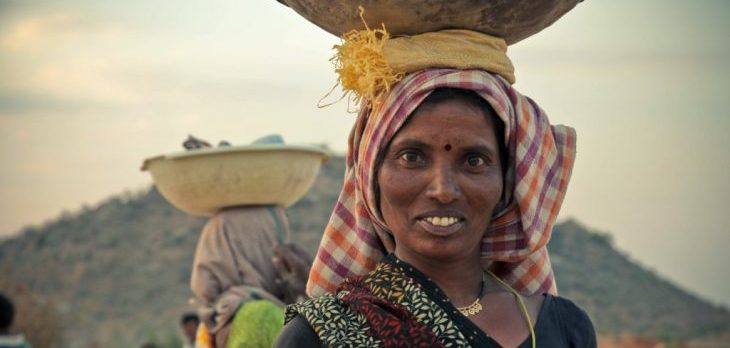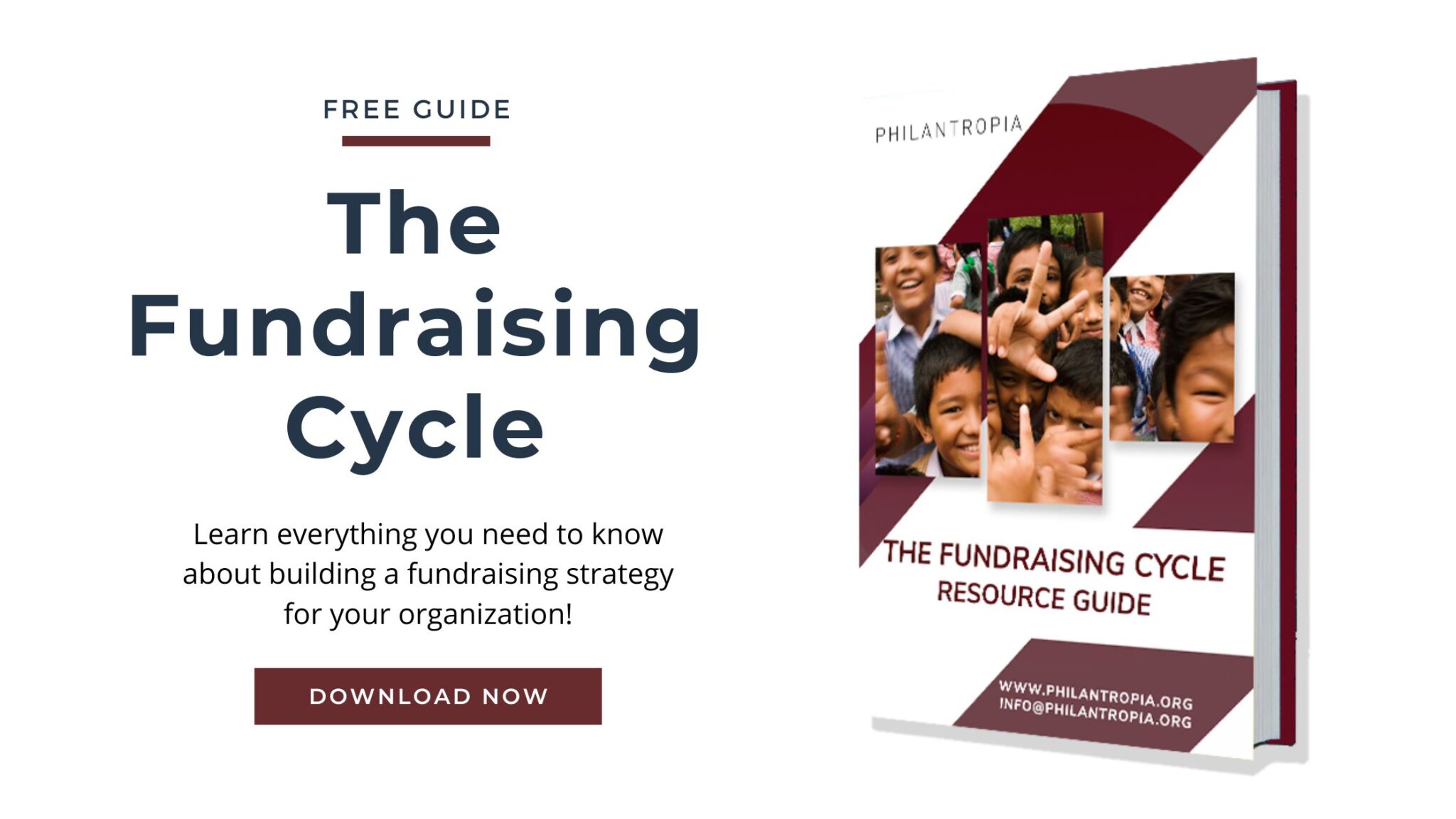When you write an proposal for project funding, you always have to explain who the project beneficiaries are. But what exactly does this mean? And why does your donor want to know this? In this article, we explain all you need to know about beneficiaries.
The project beneficiaries also called the target group or the target beneficiaries of your project, are those who will benefit from your project. They are the people whose circumstances you want to change by implementing your idea. They can be affected directly or indirectly by the project.
While beneficiaries are not typically listed in an overview part of the proposal, information about the beneficiaries is actually very important in your proposal. This is because helping beneficiaries is the number one reason donors are willing to give money. Information about and references to beneficiaries should be dispersed throughout the entire proposal. This helps the donor to understand your project, see the importance you place on helping others, connect emotionally with the project and people, and finally decide if they support your plan. For these reasons, you should explain not only the number of beneficiaries you serve but also who they are and what challenges they face. In particular, you should directly state if your target group includes vulnerable groups of people, i.e. children, women, minorities, etc.
Why is the number of project beneficiaries so important to donors?
Often, donors think of their grants as investments of some sort. They give money to NGOs to see some impact and they want their partners to work towards their own mission. The more people that can be benefited with a certain amount of money, the better. Often, one of the first things evaluators do is to divide the grant amount by the number of beneficiaries – this way they can see which of the proposals would be the most effective. Of course, this is not the only measure they look at, but it is an important one.
Donors want to achieve impact, so the people you work with are very important to them. When you talk about beneficiaries, it is also a section where you can really show that you are an expert for the communities you want to work with. You can show that you know exactly what is going on and that you have inside knowledge about the project beneficiaries.
What is the Difference between Direct and Indirect Beneficiaries?
To accurately explain your project impact, you need to consider everyone who may benefit from the project. Here we explain the difference between those who benefit directly and indirectly.
A direct beneficiary, sometimes called a primary beneficiary, is someone who is directly involved with your project and benefits from it. Depending on your project this could be people who participated in your training, students of the school you built, or women who received livestock. The important thing is that the direct beneficiaries are connected with the project. Since they are so closely intertwined with the project, direct beneficiaries should be easy to count and describe.
An indirect beneficiary, sometimes called a secondary beneficiary, is someone who is not directly connected with the project, but will still benefit from it. This could be other members of the community or from the area or family members of the participants. Most projects are not planned around indirect beneficiaries, and so they are more difficult to describe precisely.
Here are some examples to make the distinction more clear:
- Your project builds toilets for 20 individual households. The 20 families that receive toilets are the direct beneficiaries. The entire community is the indirect beneficiary, as the general hygienic conditions in the village improve.
- 50 farmers learn how to grow trees in a soil erosion-prone area. These 50 farmers are the direct beneficiaries of the project. Communities living downhill are the indirect beneficiaries, as their fields and water supplies are also affected by erosion.
- You give out sewing machines to 15 women and train them in sewing. These 15 women are the direct beneficiaries of your project. Their families are the indirect beneficiaries, as the extra income the women will earn will benefit them as well.
Is it important to have the correct numbers of project beneficiaries?
Often NGOs struggle to give an exact number of the project beneficiaries, specifically if you are looking for the number of indirect beneficiaries. So, they either do not give a specific number or spent way too much time trying to define this number. Of course, it is important to give an accurate number when talking about beneficiaries, but sometimes it needs to be a realistic estimate – in some cases, you just don’t have the chance to be 100% correct.
I.e. if you are working with women and want to include their families in the number of indirect beneficiaries, you can either count all family members (a lot of work) or just take the average family size for the region you work in. This way, you still get a number that is probably close to the truth, and you save a lot of time. Explain the way you got your results though and stay realistic. While it is important that your project benefits as many beneficiaries as possible for the donor to see that they will get a good return on investment, it is also important to stay realistic. If the RoI is too good to be true, donors will get suspicious and double-check everything.
Can beneficiaries only be people?
Most donors will say beneficiaries must be living people – plants, animals, or the land itself are not included.
The goal of some projects may be to conserve the rainforest, find homes for street dogs, preserve cultural heritage sites, remove plastic waste from oceans, save wild tigers, etc. It may seem like no humans benefit from these projects – in fact, some may appear to directly hinder human development. However, even in these projects, humans do benefit. This may be from preserving cultural ties to the land, increasing human health, and happiness, preserving an ecosystem and food chain that includes humans, building future research opportunities, increasing economic possibilities, etc. Just make sure the connection is clear in your proposal.




How to write a grant proposal
Thank you for sharing this vital information with us
Thanks this is relevant for people who work in NGOs
im work with volunteer in Ethiopia
Very interesting note or clarification. I liked it.
Dear Amha: I am glad you found this article helpful!
Thank you for giving us the best thing to me about the whole thing concerning proposal
Dear Tumaini: I am glad you found this article helpful!
is there any proposal format that you can share and having all the necessary requirement that a proposal should have
Hello Amanuel:
we so have a grant proposal template- https://proposalsforngos.com/sample-categories/proposal-templates/. It gives grassroots NGOs a better idea of what to include in a grant proposal to convince the donor to get your amazing projects funded. But keep in mind that many donors have their own templates and specific guidelines. While this template can give you an idea of how many proposals look like, it is always imperative to follow the donor’s guidelines!
Thank you for this insightful information
Great information
Thank you
Dear Twongirwe:
Glad you found the article helpful.
Can someone when writing a project and your donor want you says Please explain what the expected results of the proposed activities will be on the situation of end-beneficiaries.
“
Hello Eva,
Thanks a lot for sharing this. I work for a humanitarian Organization (AVSI Foundation – Kenya) and we are trying to develop a TOR for tracing past beneficiaries of an OVC program. I would very much appreciate it if you could help me look at it. If this is possible. Kindly reach me via email at eric.atinga@avsi.org, thank you.
Dear Eric: You can reach us at info@philantropia.org.
Thank you, this was so helpful
Glad you found the article helpful.
thanks.
How can estimate direct and indirect beneficiaries in health projects? clinics and hospitals? As the project targets the population already mentioned in the proposal which can be counted as direct beneficiaries, who are the indirect beneficiaries in this case?
Thanks,
Dear Dr. Labibullah:
Breaking down how we figure out the folks who benefit from health projects in clinics and hospitals:
Direct Beneficiaries: These are the ones right in the action – patients getting medical care, the medical staff treating them, and even the hospital managers and support teams keeping things running smoothly.
Indirect Beneficiaries: These are the folks who feel the positive ripples, even if they’re not in the spotlight. Think of families and friends of patients, the local community around the clinics, and other healthcare places nearby. The better the clinics, the better the vibe for everyone.